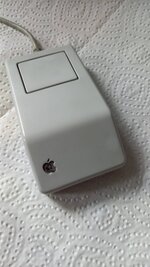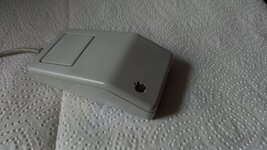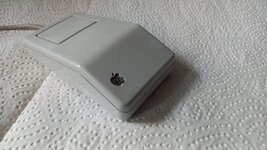As said in the title. It was my first real experience with the whole process (aside from a GameCube Memory Card). Generally I'm quite happy with the result but the one thing that was unexpected is that I ended up with three spots of the plastic that turned out a bit brighter than the rest (top of the mouse button, lower half opposite the apple logo and on the side in the area of the "edge", see images, second one has them visible the most). Interestingly these happen to be the spots which get the most skin contact when the mouse is actually being used. I'd like to ask if someone has a bit more experience with this process and can tell me what happened there and if i can still get it to a uniform color with a second run. Also is there anything to keep in mind in terms of the specific plastics it's made of?



